Myra Waldo. Meta Given. Helen Evans Brown. Mary Moore.
For every Julia Child or Irma Rombauer, countless female food writers shaped the way millions cooked. These were the early recipe writers, some contributing beloved family recipes to their local church group or Junior League cookbook fundraisers, others more accomplished: trained home economists who began writing newspaper columns and parlayed their words into careers. Quietly influencing culinary trends, this collective of women taught frugal housewives to stretch ingredients, cook on a budget, and navigate the kitchen before the age of convenience foods.
The early cookbook authors were prolific, influential and most of all helpful. Sections called Special Household Helps had guidance on everything from how to set a table, remove stains, freeze food properly, make ingredient substitutions, choose wine, use up raw eggs and yolks, carve meat.
Most helpful of all, many featured before and after measurement charts, helping women managing busy households shop and plan wisely. If you knew that 3 whole medium-sized apples weighed 1 pound, and yielded 2¾ cups pared and diced or sliced apples, say, then you knew exactly how much to buy for an apple pie. While we turn to our phones for this handy advice, our mothers and grandmothers turned to their cookbooks for a rich world of information all at their fingertips.
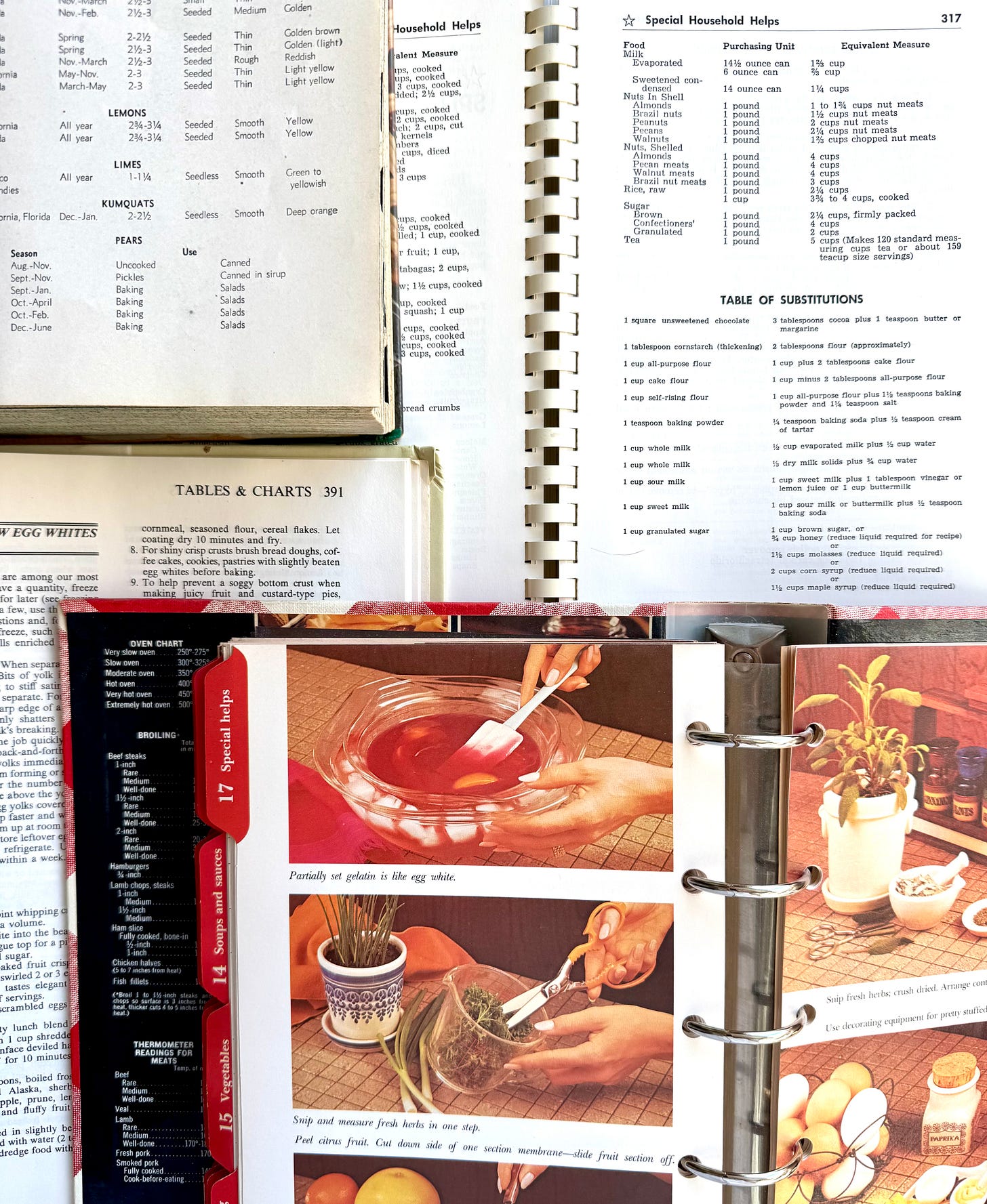
The shorthand codes for cooking were prolific. Instructions such as “bake in a slow oven” or “use a No 2 can of tomatoes” mean little to us now but were the lingua franca between novice cooks and experienced hostesses. Cookbook authors understood this and made sure their books had more than just recipes. With techniques and information tailored for real-life kitchens, these authors helped home cooks navigate the kitchen with confidence.
Yet, many of those voices have vanished over time.
Food…don’t waste it
The cold hard realities of wartime economizing made these books even more essential.
Women like Meta Given offered practical, nutritious meals tailored to a growing post-war society. A home economist who believed that every meal should be both delicious and economical, Given wrote The Modern Family Cookbook in 1942. Her philosophy? Cooking didn’t need to be fancy, but it needed to be done right.
Given’s book, filled with meal plans and no-nonsense advice, became kitchen bibles for housewives across America. If you wanted to know how to stretch a meal, make the most of seasonal produce, or serve a balanced dinner without breaking the bank, Given had the answers.
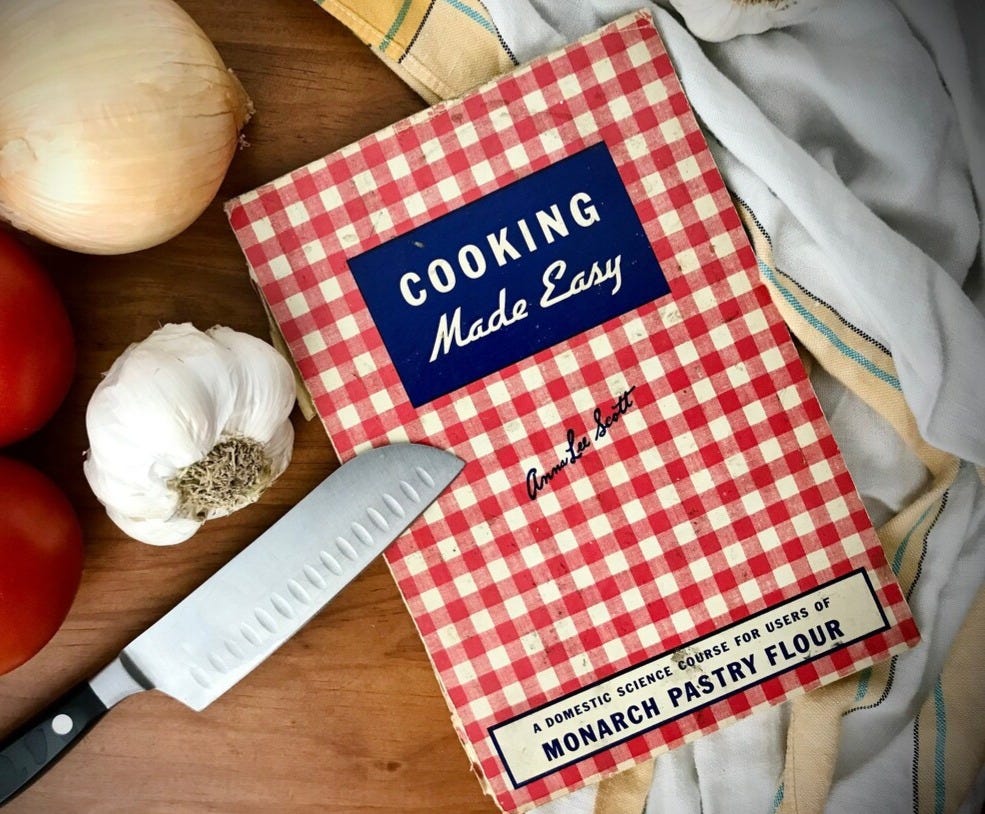
And then there were the home economists. Many of the most widely distributed cookbooks and food pamphlets weren’t attributed to a single author but to company-backed personas. In Canada, the Maple Leaf Milling Company created Anna Lee Scott as a marketing figure, yet behind this name were real women like Katherine Caldwell Bayley and Grace Barbara Gray, who shaped how Canadian households cooked for decades. The company’s French-Canadian counterpart, Marthe Miral, provided culturally specific guidance for French-speaking Canadian women, ensuring that regional traditions were preserved.
There’s something about Mary
In our house, Mary Moore reigned supreme.
Mary Moore might not be a household name today, but for decades, she was a trusted voice in Canadian kitchens. Moore dished out practical, no-fuss advice to home cooks across the country for half a century. Born in Hamilton in 1903, Moore’s career began by pure luck when her sister, Pearl, turned down a request from the Edmonton Journal to write a St. Patrick’s Day food column and passed the opportunity to Mary instead.
Moore dished out practical, no-fuss advice to home cooks across the country for half a century.
That one column sparked a 50-year career, during which Moore’s recipes appeared in dozens of newspapers nationwide. Clipped and saved by thousands—including my mother—her columns were filled with warmth, humour and common-sense guidance.
Moore got a leg up during World War II. When sugar rationing made baking a challenge, the St. Lawrence Starch Company hired her to create recipes using BeeHive Corn Syrup as a substitute. In just three weeks, she and her sisters produced an entire recipe booklet, earning Moore enough money for a down payment on her own home—no small feat for a newly divorced mother of two. She also ran a small food canning company, Mary Miles Foods, with her sisters.
Despite her immense influence, Moore remained refreshingly down-to-earth, often sharing her own kitchen mishaps with readers. She passed away in 1978, just as The Mary Moore Cookbook, edited by her son Peter, hit the shelves. She didn’t live to see its success, but the book sold over 75,000 copies, proving that her legacy was more than just recipes—it was about making cooking accessible, comforting, and above all, real.
A piece of cake
Baking is love turned into food.
— Mary Berry, British food writer
I often wonder what my mother, an Italian immigrant, made of this strange new world she found herself in, especially in the supermarket. She eschewed the convenience foods of the modern housewife in the 1960s—TV dinners, frozen vegetables, instant potatoes, Hamburger Helper—for the comfort foods she knew, loved and made to perfection: gnocchi, homemade pasta, pizza, lasagna.
Yet she also embraced many of the newfound traditions and tastes of her adopted homeland. She read Moore’s daily columns in our local paper religiously, especially when sweet treats were on offer. While Hamburger Yum Yum and the Bacon Substitute went unclipped, my mother’s little yellow recipe box was stuffed full of carefully cut out baking recipes from Moore.
When my mother passed away, I gladly added Moore’s cookbook to my shelf. Over the years I turned to it only once, to make a classic fresh blueberry pie. It was excellent, but somehow, I never returned to explore more.
Until last Sunday, which marked our eighth Sunday Night Dinner so far this year, wherein we cook an entire meal from one cookbook. The random choice this week was…The Mary Moore Cookbook.
Never mind the grainy black and white photos, or the recipes reflective of another time and place. In a perfect example of “you can’t judge a book by its cover,” we discovered that Moore’s nearly 50-year-old tome is packed with many surprisingly modern and cook-worthy dishes. Everything from vichyssoise, veal cordon bleu and oysters casino, to croissants, Selfridge’s shrimp salad and that fresh blueberry pie. And why wouldn’t it be? A five-decade career dedicated to meticulously creating recipes is bound to produce fantastic results.
As we continue cooking from the many cookbooks on our shelves, I won’t let Mary Moore’s legacy fade into the background while I turn to more modern authors. Her work is a reminder that some of the best food often comes from the most unexpected—and delightful—places.
If you liked this post, let me know by clicking the ❤️ button. It helps spread the word about Delicious Bits and brings me joy. Thank you, dear readers and eaters!
Seafood casserole
The Mary Moore Cookbook, Mary Moore
serves 6-8
Sunday’s dinner was an old-school celebration of Mary Moore and both our mothers. We started with shrimp cocktail with Moore’s homemade cocktail sauce, using these beautiful vintage seafood cocktail glasses that belonged to my mother-in-law, Lise.
We followed it up with this delicious seafood casserole that comes together easily and gave us plenty of time to put together a leafy salad with a tarragon-mustard vinaigrette.
Best of all was the old-fashioned dessert: lazy daisy oatmeal cake. Although I can’t recall if my mother ever made it, she would have loved its richness. And as it happens, Lise made this often, and Richard happily savoured every bite, a sweet reminder of his childhood. Stay tuned for a future Delicious Bits post featuring this nostalgic treat.
Seafood Casserole: Ingredients
1 pound raw unpeeled shrimp
1 small onion, peeled and sliced
1 bay leaf
1 cup butter
1 medium onion, chopped
3 tablespoons flour
2 teaspoons salt
3 cups milk, warmed
1 tablespoon chopped parsley
2 pounds cod fillets
½-1 pound mushrooms (white button for a retro vibe or a mix), washed and quartered
6 large yellow-fleshed potatoes, such as ballerina or Yukon Gold
Heat oven to 375°F.
Put shrimp in a medium saucepan and barely cover with cold water. Add 1 sliced onion and 1 bay leaf. Bring to a boil, covered. Immediately remove from heat and let stand for 15 minutes. Drain and remove shells. Set aside.
Warm the milk in a saucepan over low heat.
In a large saucepan, melt butter. Add chopped onions and gently sauté for 5 minutes. Blend in flour and salt with a whisk, then stir in milk, whisking until thick. Remove from heat and stir in parsley. Keep warm over lowest possible heat.
Scrub and peel potatoes. Slice into ⅛-inch thick pieces. Neatly line the sides and bottom of a 9x12 casserole dish with potato slices. Wash and quarter the mushrooms and set aside.
Cut fish fillets into bite-sized pieces and layer over the potatoes. Cover with washed and quartered mushrooms. Add shrimp on top. Pour the sauce evenly over everything, ensuring it filters through the layers. Brush any protruding potato edges with some of the sauce.
Bake for 40 minutes, or until bubbly and golden.


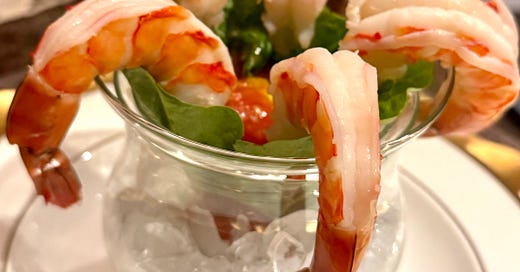



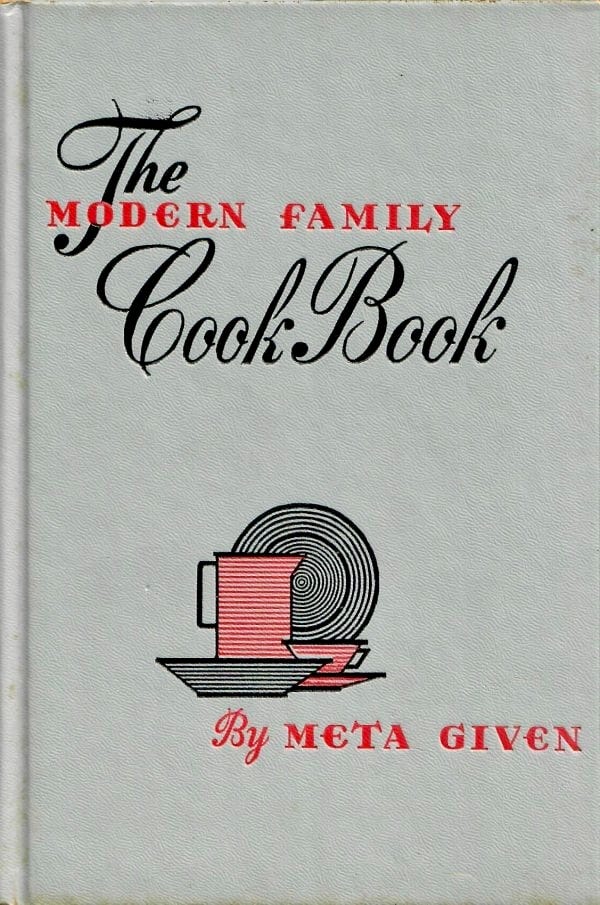
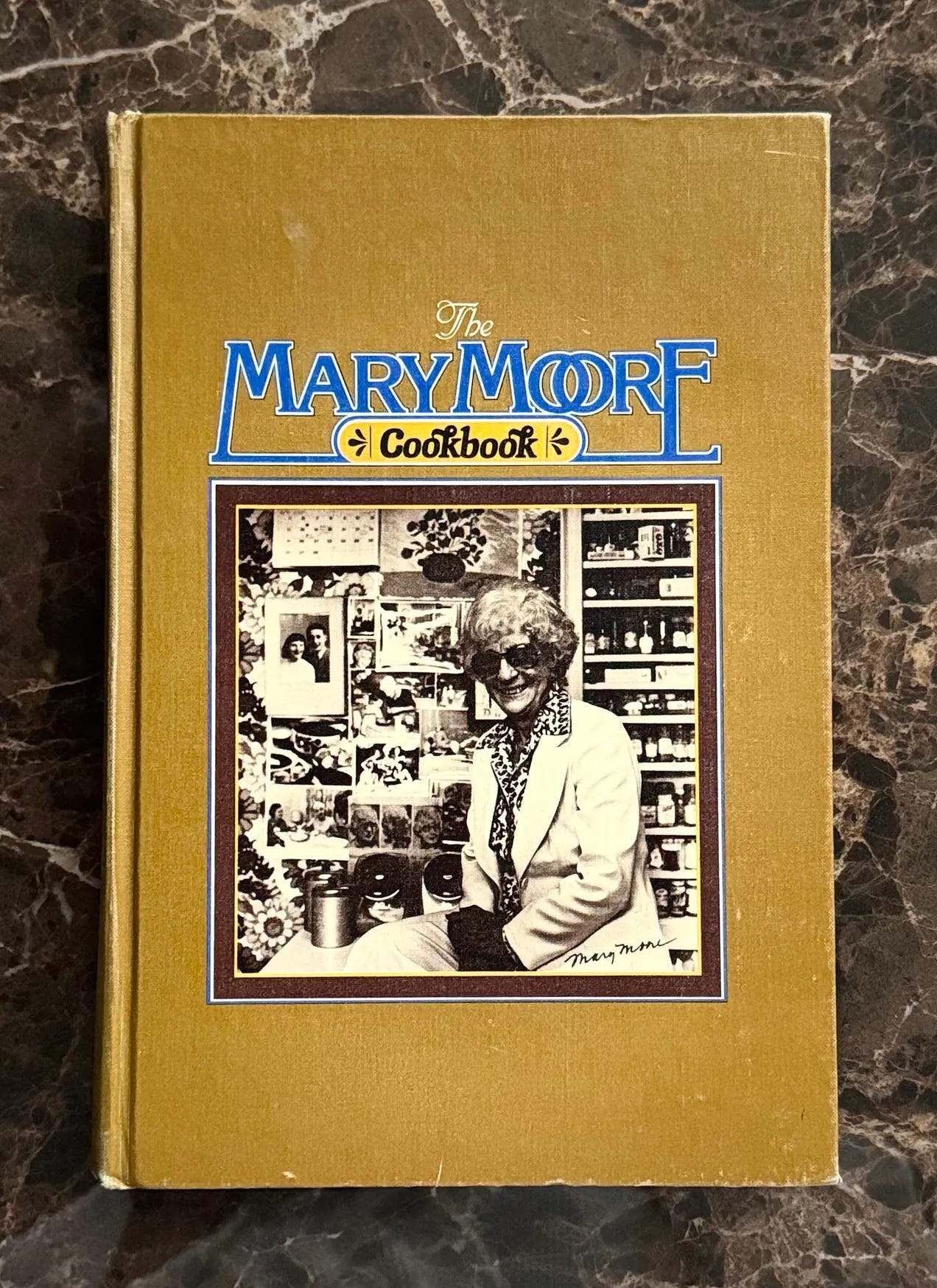
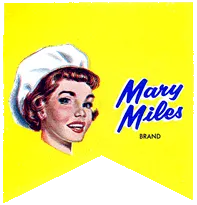
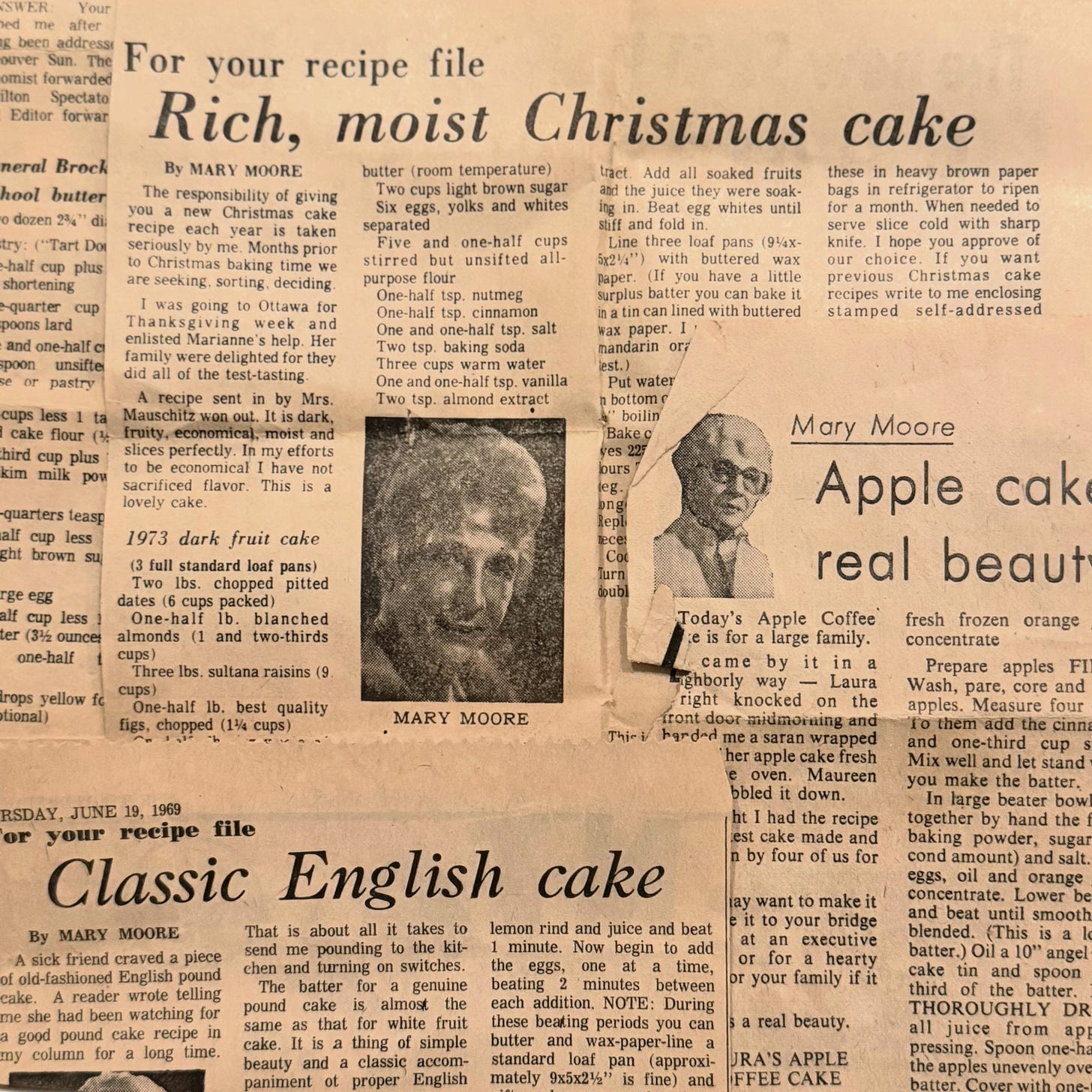
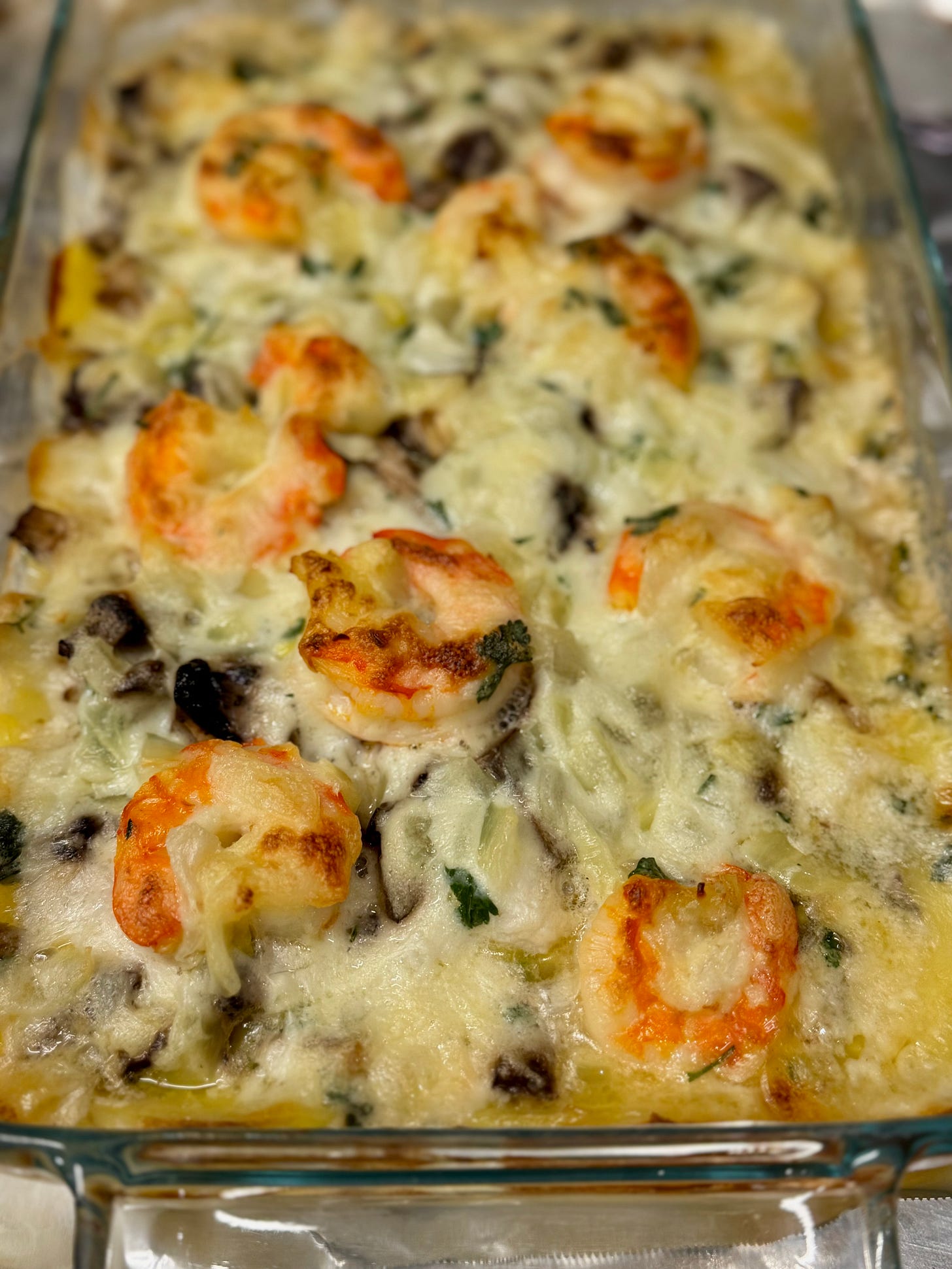

Hi Elizabeth,
I get your weekly recipe posts and I have to tell you how much I love them. I enjoy each week's random thoughts and musings paired with a (sometimes surprising) recipe. This week's column vibrated deep within me, bringing back similar memories of my mother and all her saved recipes. Plus, the seafood casserole!! We are planning to have a retro dinner with this dish as the star. Thank-you for the inspiration.
What a fun read! I have to say, Meta Given sounds like a very modern name for a movie character, lol. And wow, that seafood casserole looks amazing!